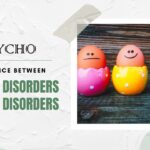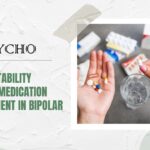Bipolar Disorder and MDD are psychiatric illnesses. They share indications and moods but are handled differently. Bipolar Disorder, often known as manic depression, causes significant mood swings between despair and mania or hypomania. Depressed people feel unhappy, lethargic, uninterested, and unable to focus. However, manic or hypomanic episodes raise your mood, vitality, self-esteem, and impulsivity. Bipolar Disorder is classified by episode severity and frequency. Bipolar I, II, and Cyclothymic Disorder are these sorts.
Clinical depression, also known as Major Depressive Disorder (MDD), is characterized by persistent sorrow, apathy, and helplessness. MDD sufferers do not experience hypomania or mania. MDD can affect eating, sleeping, concentrating, and even suicidal thoughts. Event frequency and severity determine MDD kind.
Manic or hypomanic episodes are the main distinction. Bipolar Disorder, unlike MDD, increases mood. The diagnosis affects treatment success. Bipolar illness patients typically need mood stabilizers, antipsychotics, or therapy for both depression and mania. CBT and medications help MDD, though.
Bipolar Disorder has manic or hypomanic periods and depressed symptoms, whereas Major depressive Disorder does not. Healthcare workers must distinguish between these illnesses to provide patients with specific therapies that improve their quality of life.
|
S. No. |
Aspect |
Bipolar Disorder |
Major Depressive Disorder (MDD) |
|
1 |
Mood Episodes |
Involves both depressive and manic/hypomanic episodes |
Characterized by depressive episodes only |
|
2 |
Manic and Hypomanic Episodes |
Distinct periods of elevated mood, energy, and activity |
Absence of manic or hypomanic episodes |
|
3 |
Manic vs. Hypomanic Episodes |
Manic episodes are more severe, impairing, and longer |
|
|
4 |
Mood Swings |
Alternation between depressive and manic/hypomanic phases |
Predominantly depressive phases |
|
5 |
Manic Episode Symptoms |
Absence of manic symptoms |
|
|
6 |
Hypomanic Episode Symptoms |
Similar to manic but milder in intensity |
Milder form of manic symptoms |
|
7 |
Duration of Mood Episodes |
Can last days to weeks |
Typically lasting at least 2 weeks |
|
8 |
Psychosis During Mood Episodes |
Common during severe manic episodes |
Not a typical feature |
|
9 |
Cycle of Mood Episodes |
Episodes alternate between manic, depressive, and sometimes euthymic |
Episodes involve depressive phases only |
|
10 |
Euthymic Phase |
Periods of normal mood and functioning |
N/A |
|
11 |
Severity of Depressive Episodes |
Comparable to Major Depressive Disorder |
Same as Major Depressive Disorder |
|
12 |
Triggers for Mood Episodes |
Can be triggered by stressors or occur spontaneously |
Similar triggers as Major Depressive Disorder |
|
13 |
Genetic Component |
High heritability |
Moderate heritability |
|
14 |
Cognitive Changes During Mania |
Impaired judgment and risk-taking behavior |
Cognitive changes less prominent |
|
15 |
Antidepressant Use |
Can trigger manic or hypomanic episodes |
Commonly prescribed for MDD |
|
16 |
Mood State Changes |
Shifts between polar opposite moods |
Predominantly depressive mood |
|
17 |
Medication Management |
Often involves mood stabilizers |
May involve antidepressants |
|
18 |
Elevation of Self-Esteem |
Common during manic episodes |
Not as commonly seen during MDD episodes |
|
19 |
Course of Illness |
Chronic, with episodes recurring |
Episodic, with potential for recurrence |
|
20 |
Sleep Patterns |
Reduced need for sleep during manic episodes |
Sleep disturbances are common |
|
21 |
Response to Treatment |
Mood stabilizers, antipsychotics for manic episodes |
Antidepressants, psychotherapy for MDD |
|
22 |
Functional Impairment |
Impaired functioning during manic, depressive, and mixed episodes |
Impaired functioning during depressive episodes |
|
23 |
Neurotransmitter Involvement |
Dysregulation of dopamine, serotonin, and norepinephrine |
Dysregulation of serotonin and norepinephrine |
|
24 |
Psychomotor Agitation |
Common during manic episodes |
Can be present during severe depressive episodes |
|
25 |
Delusions and Hallucinations |
Common during severe manic episodes |
Rare and generally not prominent |
|
26 |
Mood Disorder Categories |
Bipolar I, Bipolar II, Cyclothymic Disorder |
Unipolar Mood Disorders, including MDD |
|
27 |
Risk-Taking Behavior |
More common during manic episodes |
Generally less prominent |
|
28 |
Creativity During Mania |
May experience heightened creativity |
Not as commonly associated with MDD |
|
29 |
Seasonal Patterns |
May not follow a seasonal pattern |
Seasonal affective disorder can be present |
|
30 |
Impact on Relationships |
Relationships may be strained during manic or depressive episodes |
Relationships can be strained during depressive episodes |
|
31 |
Medication Adjustments |
Often require ongoing adjustments |
Adjustments may be needed for treatment-resistant cases |
|
32 |
Episode Duration |
Can vary from days to months |
Typically shorter than Bipolar episodes |
|
33 |
Response to Positive Events |
Amplified response during manic episodes |
Reduced response during depressive episodes |
|
34 |
Psychotherapy Use |
Psychoeducation, cognitive-behavioral therapy |
Psychotherapy often recommended |
|
35 |
Cognitive Impairment During Mania |
Impaired decision-making and impulse control |
Reduced cognitive impairment |
|
36 |
Genetic and Environmental Factors |
Genetic and environmental contributions |
Both play a role in MDD development |
|
37 |
Substance Use During Mood Episodes |
Increased likelihood during manic episodes |
May be more prominent during MDD episodes |
|
38 |
Neuroimaging Findings |
Brain structure and function abnormalities during mood episodes |
Brain changes associated with MDD |
|
39 |
Medication Classes |
Mood stabilizers, antipsychotics |
Antidepressants, mood stabilizers |
Frequently Asked Questions (FAQS)
Q1. What is the biggest difference between Bipolar Disorder and Major Depressive Disorder (MDD)?
Extreme mood swings are a sign of bipolar disorder. This includes both depressed episodes and manic or hypomanic episodes, which are marked by a high mood and a lot of energy. Major depressed Disorder, on the other hand, is characterized by long times of great sadness, lack of interest, and other depressed symptoms, but not by manic or hypomanic episodes.
Q2. How can I tell the difference between an attack of mania and an episode of hypomania?
When someone with Bipolar Disorder has a manic episode, their behavior, energy, and mood change in a big way. These changes can have a big effect on their daily life, sometimes making it hard for them to function or even putting them in the hospital. Hypomanic events, on the other hand, aren’t as bad and can make you more productive and creative. Even though both can cause a high mood, a manic attack tends to be worse and have more negative effects.
Q3. Can someone with Bipolar Disorder only have moments of depression and not mania?
Yes, Bipolar II Disorder is a type of Bipolar Disorder that is marked by repeated episodes of depression and hypomania without full-blown manic episodes. People with Bipolar II Disorder may not experience the extreme highs that come with mania, but their moods still change a lot.
Q4. Are there any things that make these problems more likely to happen?
Bipolar Disorder and Major Depressive Disorder can both be caused by things like genes, biology, and surroundings. If either problem runs in your family, your chance of getting it goes up. Major life changes, tragedy, worry that lasts for a long time, and drug abuse can all lead to these conditions.
Q5. Can these conditions be handled well?
Yes, both Bipolar Disorder and Major Depressive Disorder can be helped by using more than one method. Bipolar Disorder is often treated with mood stabilizers, antipsychotics, counseling, and changes in living to help control mood swings. Most of the time, counseling, antidepressant drugs, or a mix of both are used to treat MDD. With early help and continued care, symptoms can be controlled and the quality of life can get better.









